“BHUTAN” JEWELS OF THE EAST
One of the richest in the world, the country with the destination.
“BHUTAN” JEWELS OF THE EAST 10 Days/ 9 Nights







Group size:





Max-Altitude:
Arival On:
Meals:
Accomodations:
Program ID:
Departure From:
Destination:
Fitness Level:
Transport Type:
1-10 people
Kathmandu, Nepal
3,210m/10,529ft
Breakfast in Kathmandu. All meals in Bhutan
4-star hotels in Nepal and in Bhutan
International air flight/Private Vehicles
Nepal, Bhutan
Kathmandu, Nepal
Easy
YBE-091

TRIP INTRODUCTION
Hidden deep in the folds of the great Himalayan Mountains for the years, the population of about 700,000 people, living in close harmony with nature, evolved a unique identity and derived largely from a rich religious and cultural heritage. Today the world is seeing many exotic aspects of the kingdom. Bhutan is becoming increasingly known for its pure practice of Mahayana Buddhists in the Tantric form, its untouched culture, its pristine ecology and wildlife, and the unparalleled scenic beauty of its majestic peaks and lush valley. It is still, in many ways, a magical kingdom of the east.
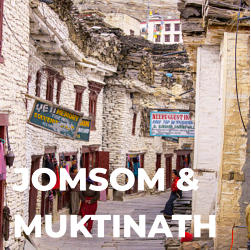
DETAIL ITINERARY
DAY 01: (1350 meter): Kathmandu:
Arrival in Kathmandu (1350M), meeting at the airport, and transfer to the hotel. After a short break,
you will visit the Kopan monastery and stupa Baudhanath, which was believed to be built in 5 AD.
This stupa is considered as the largest Buddhist stupa in the world, visiting monasteries seeing
devotees making the circle, praying, offering a butter lamp to Buddha is a common practice of
Buddhism.
DAY 02: (2280 meter): Kathmandu-Paro-Thimpu:
Departure to Bhutan, the flight would be an hour-long to Paro (Altitude 2280 m) – our Bhutan
representative will receive you at the Paro airport and drive to Thimphu. On the way, view Tamchog
Monastery built by Thangthong Gyalpo (Popularly known as Lama Chazampa, which means, the
Iron Bridge builder) in the 15th century. Dinner and overnight in Hotel.
DAY 03: (2320 m): Thimpu:
The day begins with a visit to the National Memorial Chorten (1974) built-in honor of our 3rd King,
Tallest Statue of Buddha, Changangkha Lhakhang, Takin Preserve center, Sangaygang viewpoint,
and the Dupthop Lhakhang one of the few surviving nunneries in Bhutan.
After lunch, we then visit the National Library, stocked with ancient Buddhist manuscripts. In the
evening, visit the Tashichho Dzong, the seat of the national government and the Central Monastic
Body, including the summer residence of the Je Khenpo (Chief Abbot of Bhutan). Dinner and
overnight in Hotel.
DAY 04: (1310 meter): Thimpu-Punakha:
After breakfast, drive to Punakha via Dochula pass (76 Km, 3 hrs. drive). We stop for a while at
Dochula pass to view Higher Himalayas. Drive further down and visit the Royal Botanical Garden at
Lamperi.
On the way, view Chimi Lhakhang, which was built by Lama Drukpa Kuenley (Popularly known as
“The Divine Madman”, in the year 1499. The Temple is also known as “the Temple of Fertility”.
After lunch, visit Punakha Dzong built in 1637 by Shabdrung Ngawang Namgyal and is situated
between Pho Chu (Male River) and Mo Chu (Female River).
In the evening, excursion to Khamsung Yulley Namgyal Choling Monastery. Dinner and overnight in
Punasangchu Cottages.
DAY 05: Punakha - Gangtey (3120 meter): (66 km, 3 hrs)
After breakfast, drive to Gangtey. Enroute sightseeing in the valley of Wangdiphodrang includes a
visit to the Wangdiphodrang Dzong (razed by fire in 2012), & under construction (from outside) built-
in 1638. The Dzong is situated at the confluence of the Mo Chu and Tang Chu rivers. Drive further to
Gangtey.
After lunch, explore Phobjikha valley, the roosting ground of the Rare Black-necked Cranes in winter,
and visit the Crane Information center. Dinner and overnight in Theckchen Phodrang Guesthouse or
similar.
DAY 06: Gangtey - Thimphu: (Altitude 2320 m) (143 km – 6 hrs.):
After breakfast, drive to Thimphu. Lunch will be served on the way. In the evening, free for shopping
and photography in the town. Dinner and overnight in a Hotel.
DAY 07: Thimphu – Paro: (Altitude 2280 m, Distance 58 km, Drive Time 1 hour):
After breakfast, drive to Paro and hike to Taktsang Monastery: a short drive takes us to Satsam
Chorten, from there a 2-hour walk till the viewpoint point of the monastery. The trail climbs through
a beautiful pine forest. This incredible monastery clings to the edge of a sheer rock cliff that plunges
900 meters into the valley below. Legend has it that Guru Padmasambhava, the tantric mystic who
brought Buddhism to Bhutan, flew here on the back of a flying tiger, Dorji Drolo, said to be his
favorite consort. Dinner and overnight in a Resort.
DAY 08: (4500 meter): Paro Sightseeing: (Altitude 2280 m):
After breakfast, visit Ta Dzong (built in 1656 and renovated in 1968), an ancient watchtower, which
now houses the National Museum. Below the museum is the Paro Rimpung Dzong (literally
meaning “Heap of Jewels”, built in 1646 by Shabdrung Ngawang Namgyal, the center of civil and
religious authority in this valley. A short walk takes you to the base of the dzong and across a
traditional cantilevered, covered bridge.
After lunch, visit the ruins of the Drukgyal Dzong 16 km up the valley built in 1647 by the great
Shabdrung Ngawang Namgyal. Dinner and overnight in a Resort.
DAY 09: Departure from Bhutan: (Altitude 2280 m).
Early flight to Kathmandu. On arrival at Kathmandu, after a short break guided tour to Kathmandu
Durbar square and the Patan, the city situated next to Kathmandu on its south, and finally the stupa
Svayambhunath famous as the “monkey temple”.
At 19:00 in the evening-Farewell dinner with Nepali cuisine and dancing in traditional Nepali kitchen.
Overnight at the hotel.
DAY 10: (1350M): Departure from Nepal:
Departure. Breakfast at the hotel. Checkout time for room at noon. Transfer to the airport for
departure from Nepal.



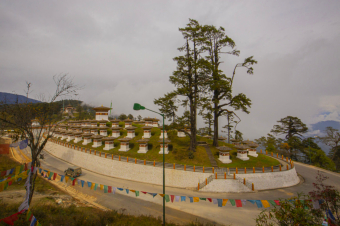

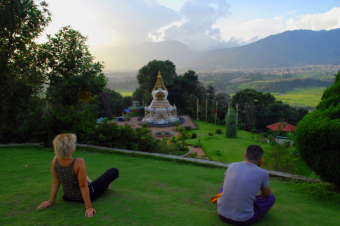
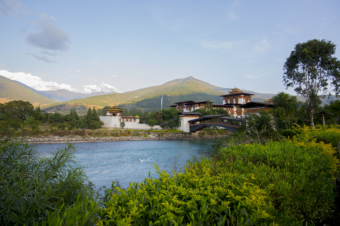
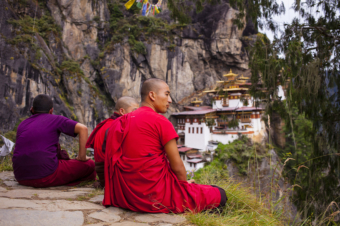
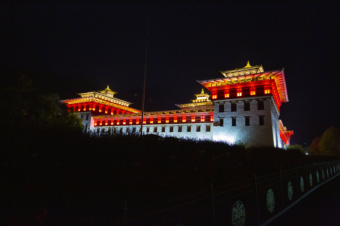
IMPORTANT:
To book the trip required a copy of
the passport with a validity of 6
months prior.
Once the Trip has been confirmed
we also need payment of at least
50% of the total amount mostly a
bank transfer. The other half can be
paid before the trip began.
TRIP INFORMATION
THE PRICE INCLUDES:
• Placement in the category in a double room with breakfast in Kathmandu. • Placement in the hotel mentioned above with double occupancy. • Full board in Bhutan. • Air ticket: Katmandu-Paro-Katmandu (Economy class) • Permits to Bhutan visit. • Transfers according to the program • Excursions with the English-speaking guide in Kathmandu Valley (Nepal) • Excursions with the English-speaking guide in Butane • All entrance tickets • A dinner with Nepalese cuisine and national dances in Kathmandu. THE PRICE DOES NOT INCLUDE: • The Nepalese visa (on an arrival at the airport): US$25 on persons (15 days) + 2 photos (3х4) • Lunches and dinners in Katmandu • Personal expenses and drinks • Bhutan Visa • Tip: to guides, drivers, porters, etc. • All other expenses which aren't specified in the program. • All other expenses in emergencies connected by natural disasters or situations not caused by the agency.
PRE-TRIP ESSENTIALS:
IMPORTANT: Visiting Kingdom of BHUTAN
PRACTICALITIES the royal government of Bhutan has adopted a very cautious approach to the
development of tourism in the kingdom to avoid its negative impacts on the culture and the
environment. In 2014, the number of tourists who visited Bhutan was approximately 133,480. Visitors
must either be guests of the government or travelers on an approved travel program.
THE MINIMUM DAILY PACKAGE COVERS THE FOLLOWING SERVICES:
•
A MINIMUM OF 3 STAR ACCOMMODATION (4- & 5-STAR MAY REQUIRE AN ADDITIONAL
PREMIUM).
•
ALL MEALS.
•
A LICENSED BHUTANESE TOUR GUIDE FOR THE EXTENT OF YOUR STAY.
•
ALL INTERNAL TRANSPORT (EXCLUDING INTERNAL FLIGHTS).
•
CAMPING EQUIPMENT AND HAULAGE FOR TREKKING TOURS.
IT ALSO INCLUDES:
•
ALL INTERNAL TAXES AND CHARGES
•
A SUSTAINABLE TOURISM ROYALTY OF $65. THIS ROYALTY GOES TOWARDS FREE EDUCATION,
FREE HEALTHCARE, POVERTY ALLEVIATION, ALONG WITH THE
BUILDING OF INFRASTRUCTURE:
A floor of minimum cost per person per night during the different seasons has been set up by the
government of Bhutan.
The minimum Daly package for the tourists traveling in a group of 3 persons or more is fixed. They
are based on the season. January, February, June, July, August & December.
The high season months are March, April, May, September, October, and November.
INDIVIDUAL TOURISTS AND SMALLER GROUPS OF LESS THAN THREE PERSONS ARE SUBJECT TO
THE FOLLOWING SURCHARGES, OVER AND ABOVE THE MINIMUM DAILY.
PACKAGE TARIFF:
•
FIT SURCHARGE FOR 01 PERSON - US $40/ PER NIGHT
•
FIT SURCHARGE FOR 02 PEOPLE - US$ 30/ PER PERSON PER NIGHT
SMOKING IN BHUTAN:
The Royal Government of Bhutan discourages smoking within the kingdom and smoking is
prohibited by law, but still there are certain consideration exists for the traveler who smokes. Every
visitor who smokes can carry a certain number of cigarettes and should be stated on arrival during
the customs process and this luxury cost a certain amount of government tax. Likewise, all the
public areas are prohibited areas for smokers. On the other hand, chewing tobaccos is not illegal, it is
rather welcoming.
PRE-TRIP ESSENTIALS:
HEALTH:Visit of Nepal or Bhutan does not require special vaccination; however, we recommend
consulting with the attending physician and to stock up with necessary drugs before you depart
Medical services limited in mountainous areas. If you wear glasses, it is better to have at itself a spare
couple.
MOUNTAIN SICKNESS: Any person traveling above 2500m can get easy symptoms of a mountain
illness. The first signs are headache, increased fatigue, sleeplessness, appetite loss, liquid loss by an
organism and puffiness. At the emergence of such signs, it is necessary to remain at this height
before full acclimatization of an organism. It is necessary to use from 2nd to 4 liters of liquid a day. If
symptoms don't pass and the state worsens, it is necessary to go down immediately. Sometimes
even 300m can play a crucial role. Planning the travel, leave spare days on acclimatization at height
3700m and 4300m. After 4000m try not to rise more than 500m in one day. You can inadequately
estimate the condition therefore always follow the advice of the accompanying guide or locals.
WEATHER: Weather conditions on the mountain are unpredictable. It might be sunny during the
day and cold as well as windy at night, especially at the high altitudes. Sudden rainstorms or snow
flurries are always a possibility. Better be prepared!
PACKING: Choosing the right clothing for your trip is very important. You always want to pack
everything, but that could make a hassle. Keep in mind that almost every mountain region in Nepal
the days are warm and nights are cool. Usually, we recommend people to bring warm jackets either
fleece or down, long underwear and worm shocks. Pair of pants and comfortable boot for a long day
while sport-shoes/sandals for hiking or during the less active period. The boots are another
important factor while on trek make sure that they are waterproof. The basic principle of packing is
comfort not luxury. In Kathmandu and in Pokhara you can get any necessary gear at a very
comfortable price.
But if you just enquire before you start packing things, we provide you better advice depending
upon present weather conditions. Do not pack unnecessary things like hairdryers, lots of and lots of
cosmetics and electronics, while a battery power bank (Backup) for your mobile phone, iPod is
recommended.
Another important factor is that porter/supports you hire for the trip has a certain limitation of how
much weight he will carry on his back.
THINGS THAT YOU BEAR: Baggage, backpack you give to a porter shouldn't exceed 15 kg. Your small
backpack for day transitions must be designed for the most necessary in the way: the camera, water,
additional clothes on a case of rain or a cold snap, cream from suntan, toilet paper, and other
personal accessories if any.
EMERGENCY AND YOUR SUPPORT TEAM: All our guide is well trained in first aid and can handle
most of the basic illness that occurs at high altitude or in the jungle. Every group equipped with a
basic first aid kit; every traveler must have full travel insurance before coming to Nepal. And should
make available a copy of the policy at our office in Kathmandu. If an emergency occurs, we will
evacuate you from mountain to one of the internationally recognized hospitals/ clinics in
Kathmandu and contact your insurance company.





Just tell us about your preferences, interests and the amount of time available to you and we will
take care of the rest. We will help design a tour and work out a comfortable itinerary that best suits
your needs.
WHY YANTRA TOURS & TRAVEL?
Yantra Tours & Travel is the Number one guiding cultural/ adventure
travel & tour agency in Nepal. The tour packages we offer to our clients
are very precisely carved to detail and accurate, guaranteed to departure
as scheduled unless there are unforeseen events out of control such as
natural disasters or other restrictions and so on. Read More…



“BHUTAN” JEWELS OF THE EAST 10 Days/ 9 Nights
© 2020
All material on this web site is subject to copyright
and may not be used without permission.
Design and Maintain By Valley FX
Yantra Tours & Travels Pvt. Ltd.
231/85 Anandnagar Marg, Dhumbarahi, Kathmandu, Nepal
+977 1 44 29 595; +977 1 44 38 270









“BHUTAN” JEWELS OF THE EAST
One of the richest in the world, the country with the destination.

Group size:





Max-Altitude:
Arival On:

Meals:
Accomodations:
Program ID:
Departure From:
Destination:
Fitness Level:
Transport Type:
1-10 people
Kathmandu, Nepal
3,210m/10,529ft
Breakfast in Kathmandu. All meals in Bhutan
4-star hotels in Nepal and in Bhutan
International air
flight/Private Vehicles
Nepal, Bhutan
Kathmandu, Nepal
Easy
YBE-091
TRIP INTRODUCTION
Hidden deep in the folds of the great Himalayan Mountains for the years, the population of about 700,000 people, living in close harmony with nature, evolved a unique identity and derived largely from a rich religious and cultural heritage. Today the world is seeing many exotic aspects of the kingdom. Bhutan is becoming increasingly known for its pure practice of Mahayana Buddhists in the Tantric form, its untouched culture, its pristine ecology and wildlife, and the unparalleled scenic beauty of its majestic peaks and lush valley. It is still, in many ways, a magical kingdom of the east.
DETAIL ITINERARY
DAY 01: (1350 meter): Kathmandu:
Arrival in Kathmandu (1350M), meeting at the airport, and transfer to the hotel. After a
short break, you will visit the Kopan monastery and stupa Baudhanath, which was believed
to be built in 5 AD. This stupa is considered as the largest Buddhist stupa in the world,
visiting monasteries seeing devotees making the circle, praying, offering a butter lamp to
Buddha is a common practice of Buddhism.
DAY 02: (2280 meter): Kathmandu-Paro-Thimpu:
Departure to Bhutan, the flight would be an hour-long to Paro (Altitude 2280 m) – our
Bhutan representative will receive you at the Paro airport and drive to Thimphu. On the
way, view Tamchog Monastery built by Thangthong Gyalpo (Popularly known as Lama
Chazampa, which means, the Iron Bridge builder) in the 15th century. Dinner and
overnight in Hotel.
DAY 03: (2320 m): Thimpu:
The day begins with a visit to the National Memorial Chorten (1974) built-in honor of our
3rd King, Tallest Statue of Buddha, Changangkha Lhakhang, Takin Preserve center,
Sangaygang viewpoint, and the Dupthop Lhakhang one of the few surviving nunneries in
Bhutan.
After lunch, we then visit the National Library, stocked with ancient Buddhist manuscripts.
In the evening, visit the Tashichho Dzong, the seat of the national government and the
Central Monastic Body, including the summer residence of the Je Khenpo (Chief Abbot of
Bhutan). Dinner and overnight in Hotel.
DAY 04: (1310 meter): Thimpu-Punakha:
After breakfast, drive to Punakha via Dochula pass (76 Km, 3 hrs. drive). We stop for a while
at Dochula pass to view Higher Himalayas. Drive further down and visit the Royal Botanical
Garden at Lamperi.
On the way, view Chimi Lhakhang, which was built by Lama Drukpa Kuenley (Popularly
known as “The Divine Madman”, in the year 1499. The Temple is also known as “the Temple
of Fertility”.
After lunch, visit Punakha Dzong built in 1637 by Shabdrung Ngawang Namgyal and is
situated between Pho Chu (Male River) and Mo Chu (Female River).
In the evening, excursion to Khamsung Yulley Namgyal Choling Monastery. Dinner and
overnight in Punasangchu Cottages.
DAY 05: Punakha - Gangtey (3120 meter): (66 km, 3 hrs)
After breakfast, drive to Gangtey. Enroute sightseeing in the valley of Wangdiphodrang
includes a visit to the Wangdiphodrang Dzong (razed by fire in 2012), & under construction
(from outside) built-in 1638. The Dzong is situated at the confluence of the Mo Chu and
Tang Chu rivers. Drive further to Gangtey.
After lunch, explore Phobjikha valley, the roosting ground of the Rare Black-necked Cranes
in winter, and visit the Crane Information center. Dinner and overnight in Theckchen
Phodrang Guesthouse or similar.
DAY 06: Gangtey - Thimphu: (Altitude 2320 m) (143 km – 6 hrs.):
After breakfast, drive to Thimphu. Lunch will be served on the way. In the evening, free for
shopping and photography in the town. Dinner and overnight in a Hotel.
DAY 07: Thimphu – Paro: (Altitude 2280 m, Distance 58 km, Drive Time 1 hour):
After breakfast, drive to Paro and hike to Taktsang Monastery: a short drive takes us to
Satsam Chorten, from there a 2-hour walk till the viewpoint point of the monastery. The
trail climbs through a beautiful pine forest. This incredible monastery clings to the edge of
a sheer rock cliff that plunges 900 meters into the valley below. Legend has it that Guru
Padmasambhava, the tantric mystic who brought Buddhism to Bhutan, flew here on the
back of a flying tiger, Dorji Drolo, said to be his favorite consort. Dinner and overnight in a
Resort.
DAY 08: (4500 meter): Paro Sightseeing: (Altitude 2280 m):
After breakfast, visit Ta Dzong (built in 1656 and renovated in 1968), an ancient watchtower,
which now houses the National Museum. Below the museum is the Paro Rimpung Dzong
(literally meaning “Heap of Jewels”, built in 1646 by Shabdrung Ngawang Namgyal, the
center of civil and religious authority in this valley. A short walk takes you to the base of the
dzong and across a traditional cantilevered, covered bridge.
After lunch, visit the ruins of the Drukgyal Dzong 16 km up the valley built in 1647 by the
great Shabdrung Ngawang Namgyal. Dinner and overnight in a Resort.
DAY 09: Departure from Bhutan: (Altitude 2280 m).
Early flight to Kathmandu. On arrival at Kathmandu, after a short break guided tour to
Kathmandu Durbar square and the Patan, the city situated next to Kathmandu on its
south, and finally the stupa Svayambhunath famous as the “monkey temple”.
At 19:00 in the evening-Farewell dinner with Nepali cuisine and dancing in traditional
Nepali kitchen. Overnight at the hotel.
DAY 10: (1350M): Departure from Nepal:
Departure. Breakfast at the hotel. Checkout time for room at noon. Transfer to the airport
for departure from Nepal.









TRIP INFORMATION
THE PRICE INCLUDES:
• Placement in the category in a double room with breakfast in Kathmandu. • Placement in the hotel mentioned above with double occupancy. • Full board in Bhutan. • Air ticket: Katmandu-Paro-Katmandu (Economy class) • Permits to Bhutan visit. • Transfers according to the program • Excursions with the English-speaking guide in Kathmandu Valley (Nepal) • Excursions with the English-speaking guide in Butane • All entrance tickets • A dinner with Nepalese cuisine and national dances in Kathmandu. THE PRICE DOES NOT INCLUDE: • The Nepalese visa (on an arrival at the airport): US$25 on persons (15 days) + 2 photos (3х4) • Lunches and dinners in Katmandu • Personal expenses and drinks • Bhutan Visa • Tip: to guides, drivers, porters, etc. • All other expenses which aren't specified in the program. • All other expenses in emergencies connected by natural disasters or situations not caused by the agency.
PRE-TRIP ESSENTIALS:
IMPORTANT: Visiting Kingdom of BHUTAN
PRACTICALITIES the royal government of Bhutan has adopted a very cautious approach to
the development of tourism in the kingdom to avoid its negative impacts on the culture
and the environment. In 2014, the number of tourists who visited Bhutan was
approximately 133,480. Visitors must either be guests of the government or travelers on an
approved travel program.
THE MINIMUM DAILY PACKAGE COVERS THE FOLLOWING SERVICES:
•
A MINIMUM OF 3 STAR ACCOMMODATION (4- & 5-STAR MAY REQUIRE AN
ADDITIONAL PREMIUM).
•
ALL MEALS.
•
A LICENSED BHUTANESE TOUR GUIDE FOR THE EXTENT OF YOUR STAY.
•
ALL INTERNAL TRANSPORT (EXCLUDING INTERNAL FLIGHTS).
•
CAMPING EQUIPMENT AND HAULAGE FOR TREKKING TOURS.
IT ALSO INCLUDES:
•
ALL INTERNAL TAXES AND CHARGES
•
A SUSTAINABLE TOURISM ROYALTY OF $65. THIS ROYALTY GOES TOWARDS FREE
EDUCATION, FREE HEALTHCARE, POVERTY ALLEVIATION, ALONG WITH THE
BUILDING OF INFRASTRUCTURE:
A floor of minimum cost per person per night during the different seasons has been set up
by the government of Bhutan.
The minimum Daly package for the tourists traveling in a group of 3 persons or more is
fixed. They are based on the season. January, February, June, July, August & December.
The high season months are March, April, May, September, October, and November.
INDIVIDUAL TOURISTS AND SMALLER GROUPS OF LESS THAN THREE PERSONS ARE
SUBJECT TO THE FOLLOWING SURCHARGES, OVER AND ABOVE THE MINIMUM DAILY.
PACKAGE TARIFF:
•
FIT SURCHARGE FOR 01 PERSON - US $40/ PER NIGHT
•
FIT SURCHARGE FOR 02 PEOPLE - US$ 30/ PER PERSON PER NIGHT
SMOKING IN BHUTAN:
The Royal Government of Bhutan discourages smoking within the kingdom and smoking
is prohibited by law, but still there are certain consideration exists for the traveler who
smokes. Every visitor who smokes can carry a certain number of cigarettes and should be
stated on arrival during the customs process and this luxury cost a certain amount of
government tax. Likewise, all the public areas are prohibited areas for smokers. On the
other hand, chewing tobaccos is not illegal, it is rather welcoming.
PRE-TRIP ESSENTIALS:
HEALTH:Visit of Nepal or Bhutan does not require special vaccination; however, we
recommend consulting with the attending physician and to stock up with necessary drugs
before you depart Medical services limited in mountainous areas. If you wear glasses, it is
better to have at itself a spare couple.
MOUNTAIN SICKNESS: Any person traveling above 2500m can get easy symptoms of a
mountain illness. The first signs are headache, increased fatigue, sleeplessness, appetite
loss, liquid loss by an organism and puffiness. At the emergence of such signs, it is
necessary to remain at this height before full acclimatization of an organism. It is necessary
to use from 2nd to 4 liters of liquid a day. If symptoms don't pass and the state worsens, it
is necessary to go down immediately. Sometimes even 300m can play a crucial role.
Planning the travel, leave spare days on acclimatization at height 3700m and 4300m. After
4000m try not to rise more than 500m in one day. You can inadequately estimate the
condition therefore always follow the advice of the accompanying guide or locals.
WEATHER: Weather conditions on the mountain are unpredictable. It might be sunny
during the day and cold as well as windy at night, especially at the high altitudes. Sudden
rainstorms or snow flurries are always a possibility. Better be prepared!
PACKING: Choosing the right clothing for your trip is very important. You always want to
pack everything, but that could make a hassle. Keep in mind that almost every mountain
region in Nepal the days are warm and nights are cool. Usually, we recommend people to
bring warm jackets either fleece or down, long underwear and worm shocks. Pair of pants
and comfortable boot for a long day while sport-shoes/sandals for hiking or during the less
active period. The boots are another important factor while on trek make sure that they
are waterproof. The basic principle of packing is comfort not luxury. In Kathmandu and in
Pokhara you can get any necessary gear at a very comfortable price.
But if you just enquire before you start packing things, we provide you better advice
depending upon present weather conditions. Do not pack unnecessary things like
hairdryers, lots of and lots of cosmetics and electronics, while a battery power bank
(Backup) for your mobile phone, iPod is recommended.
Another important factor is that porter/supports you hire for the trip has a certain
limitation of how much weight he will carry on his back.
THINGS THAT YOU BEAR: Baggage, backpack you give to a porter shouldn't exceed 15 kg.
Your small backpack for day transitions must be designed for the most necessary in the
way: the camera, water, additional clothes on a case of rain or a cold snap, cream from
suntan, toilet paper, and other personal accessories if any.
EMERGENCY AND YOUR SUPPORT TEAM: All our guide is well trained in first aid and can
handle most of the basic illness that occurs at high altitude or in the jungle. Every group
equipped with a basic first aid kit; every traveler must have full travel insurance before
coming to Nepal. And should make available a copy of the policy at our office in
Kathmandu. If an emergency occurs, we will evacuate you from mountain to one of the
internationally recognized hospitals/ clinics in Kathmandu and contact your insurance
company.


Just tell us about your preferences, interests and the amount of time available to you and
we will take care of the rest. We will help design a tour and work out a comfortable
itinerary that best suits your needs.
“BHUTAN” JEWELS OF THE
EAST 10 Days/ 9 Nights
© 2020
All material on this web site is subject to copyright and may
not be used without permission.
Design and Maintain By Valley FX
Yantra Tours & Travels Pvt. Ltd.
231/85 Anandnagar Marg, Dhumbarahi,Kathmandu, Nepal
+977 1 44 29 595; +977 1 44 38 270









“BHUTAN” JEWELS
OF THE EAST
One of the richest in the world, the country
with the destination.

Group size:





Max-Altitude:
Arival On:

Meals:
Accomodations:
Program ID:
Departure From:
Destination:
Fitness Level:
Transport Type:
1-10 people
Kathmandu, Nepal
3,210m/10,529ft
Breakfast in Kathmandu. All
meals in Bhutan
4-star hotels in Nepal and in
Bhutan
International air flight/Private Vehicles
Nepal, Bhutan
Kathmandu, Nepal
Easy
YBE-091




TRIP INTRODUCTION
Hidden deep in the folds of the great Himalayan Mountains for the years, the population of about 700,000 people, living in close harmony with nature, evolved a unique identity and derived largely from a rich religious and cultural heritage. Today the world is seeing many exotic aspects of the kingdom. Bhutan is becoming increasingly known for its pure practice of Mahayana Buddhists in the Tantric form, its untouched culture, its pristine ecology and wildlife, and the unparalleled scenic beauty of its majestic peaks and lush valley. It is still, in many ways, a magical kingdom of the east.
DETAIL ITINERARY
DAY 01: (1350 meter): Kathmandu:
Arrival in Kathmandu (1350M), meeting at the airport,
and transfer to the hotel. After a short break, you will
visit the Kopan monastery and stupa Baudhanath,
which was believed to be built in 5 AD. This stupa is
considered as the largest Buddhist stupa in the world,
visiting monasteries seeing devotees making the
circle, praying, offering a butter lamp to Buddha is a
common practice of Buddhism.
DAY 02: (2280 meter): Kathmandu-Paro-Thimpu:
Departure to Bhutan, the flight would be an hour-
long to Paro (Altitude 2280 m) – our Bhutan
representative will receive you at the Paro airport and
drive to Thimphu. On the way, view Tamchog
Monastery built by Thangthong Gyalpo (Popularly
known as Lama Chazampa, which means, the Iron
Bridge builder) in the 15th century. Dinner and
overnight in Hotel.
DAY 03: (2320 m): Thimpu:
The day begins with a visit to the National Memorial
Chorten (1974) built-in honor of our 3rd King, Tallest
Statue of Buddha, Changangkha Lhakhang, Takin
Preserve center, Sangaygang viewpoint, and the
Dupthop Lhakhang one of the few surviving
nunneries in Bhutan.
After lunch, we then visit the National Library, stocked
with ancient Buddhist manuscripts. In the evening,
visit the Tashichho Dzong, the seat of the national
government and the Central Monastic Body,
including the summer residence of the Je Khenpo
(Chief Abbot of Bhutan). Dinner and overnight in
Hotel.
DAY 04: (1310 meter): Thimpu-Punakha:
After breakfast, drive to Punakha via Dochula pass (76
Km, 3 hrs. drive). We stop for a while at Dochula pass
to view Higher Himalayas. Drive further down and visit
the Royal Botanical Garden at Lamperi.
On the way, view Chimi Lhakhang, which was built by
Lama Drukpa Kuenley (Popularly known as “The
Divine Madman”, in the year 1499. The Temple is also
known as “the Temple of Fertility”.
After lunch, visit Punakha Dzong built in 1637 by
Shabdrung Ngawang Namgyal and is situated
between Pho Chu (Male River) and Mo Chu (Female
River).
In the evening, excursion to Khamsung Yulley
Namgyal Choling Monastery. Dinner and overnight in
Punasangchu Cottages.
DAY 05: Punakha - Gangtey (3120 meter): (66 km, 3
hrs)
After breakfast, drive to Gangtey. Enroute sightseeing
in the valley of Wangdiphodrang includes a visit to the
Wangdiphodrang Dzong (razed by fire in 2012), &
under construction (from outside) built-in 1638. The
Dzong is situated at the confluence of the Mo Chu
and Tang Chu rivers. Drive further to Gangtey.
After lunch, explore Phobjikha valley, the roosting
ground of the Rare Black-necked Cranes in winter,
and visit the Crane Information center. Dinner and
overnight in Theckchen Phodrang Guesthouse or
similar.
DAY 06: Gangtey - Thimphu: (Altitude 2320 m) (143 km
– 6 hrs.):
After breakfast, drive to Thimphu. Lunch will be served
on the way. In the evening, free for shopping and
photography in the town. Dinner and overnight in a
Hotel.
DAY 07: Thimphu – Paro: (Altitude 2280 m, Distance
58 km, Drive Time 1 hour):
After breakfast, drive to Paro and hike to Taktsang
Monastery: a short drive takes us to Satsam Chorten,
from there a 2-hour walk till the viewpoint point of the
monastery. The trail climbs through a beautiful pine
forest. This incredible monastery clings to the edge of
a sheer rock cliff that plunges 900 meters into the
valley below. Legend has it that Guru
Padmasambhava, the tantric mystic who brought
Buddhism to Bhutan, flew here on the back of a flying
tiger, Dorji Drolo, said to be his favorite consort. Dinner
and overnight in a Resort.
DAY 08: (4500 meter): Paro Sightseeing: (Altitude 2280
m):
After breakfast, visit Ta Dzong (built in 1656 and
renovated in 1968), an ancient watchtower, which now
houses the National Museum. Below the museum is
the Paro Rimpung Dzong (literally meaning “Heap of
Jewels”, built in 1646 by Shabdrung Ngawang
Namgyal, the center of civil and religious authority in
this valley. A short walk takes you to the base of the
dzong and across a traditional cantilevered, covered
bridge.
After lunch, visit the ruins of the Drukgyal Dzong 16
km up the valley built in 1647 by the great Shabdrung
Ngawang Namgyal. Dinner and overnight in a Resort.
DAY 09: Departure from Bhutan: (Altitude 2280 m).
Early flight to Kathmandu. On arrival at Kathmandu,
after a short break guided tour to Kathmandu Durbar
square and the Patan, the city situated next to
Kathmandu on its south, and finally the stupa
Svayambhunath famous as the “monkey temple”.
At 19:00 in the evening-Farewell dinner with Nepali
cuisine and dancing in traditional Nepali kitchen.
Overnight at the hotel.
DAY 10: (1350M): Departure from Nepal:
Departure. Breakfast at the hotel. Checkout time for
room at noon. Transfer to the airport for departure
from Nepal.











TRIP INFORMATION
THE PRICE INCLUDES:
• Placement in the category in a double room with breakfast in Kathmandu. • Placement in the hotel mentioned above with double occupancy. • Full board in Bhutan. • Air ticket: Katmandu-Paro-Katmandu (Economy class) • Permits to Bhutan visit. • Transfers according to the program • Excursions with the English-speaking guide in Kathmandu Valley (Nepal) • Excursions with the English-speaking guide in Butane • All entrance tickets • A dinner with Nepalese cuisine and national dances in Kathmandu. THE PRICE DOES NOT INCLUDE: • The Nepalese visa (on an arrival at the airport): US$25 on persons (15 days) + 2 photos (3х4) • Lunches and dinners in Katmandu • Personal expenses and drinks • Bhutan Visa • Tip: to guides, drivers, porters, etc. • All other expenses which aren't specified in the program. • All other expenses in emergencies connected by natural disasters or situations not caused by the agency.
PRE-TRIP ESSENTIALS:
IMPORTANT: Visiting Kingdom of BHUTAN
PRACTICALITIES the royal government of Bhutan has
adopted a very cautious approach to the
development of tourism in the kingdom to avoid its
negative impacts on the culture and the environment.
In 2014, the number of tourists who visited Bhutan
was approximately 133,480. Visitors must either be
guests of the government or travelers on an approved
travel program.
THE MINIMUM DAILY PACKAGE COVERS THE
FOLLOWING SERVICES:
•
A MINIMUM OF 3 STAR ACCOMMODATION (4- & 5-
STAR MAY REQUIRE AN ADDITIONAL PREMIUM).
•
ALL MEALS.
•
A LICENSED BHUTANESE TOUR GUIDE FOR THE
EXTENT OF YOUR STAY.
•
ALL INTERNAL TRANSPORT (EXCLUDING
INTERNAL FLIGHTS).
•
CAMPING EQUIPMENT AND HAULAGE FOR
TREKKING TOURS.
IT ALSO INCLUDES:
•
ALL INTERNAL TAXES AND CHARGES
•
A SUSTAINABLE TOURISM ROYALTY OF $65. THIS
ROYALTY GOES TOWARDS FREE EDUCATION,
FREE HEALTHCARE, POVERTY ALLEVIATION,
ALONG WITH THE
BUILDING OF INFRASTRUCTURE:
A floor of minimum cost per person per night during
the different seasons has been set up by the
government of Bhutan.
The minimum Daly package for the tourists traveling
in a group of 3 persons or more is fixed. They are
based on the season. January, February, June, July,
August & December.
The high season months are March, April, May,
September, October, and November.
INDIVIDUAL TOURISTS AND SMALLER GROUPS OF
LESS THAN THREE PERSONS ARE SUBJECT TO THE
FOLLOWING SURCHARGES, OVER AND ABOVE THE
MINIMUM DAILY.
PACKAGE TARIFF:
•
FIT SURCHARGE FOR 01 PERSON - US $40/ PER
NIGHT
•
FIT SURCHARGE FOR 02 PEOPLE - US$ 30/ PER
PERSON PER NIGHT
SMOKING IN BHUTAN:
The Royal Government of Bhutan discourages
smoking within the kingdom and smoking is
prohibited by law, but still there are certain
consideration exists for the traveler who smokes. Every
visitor who smokes can carry a certain number of
cigarettes and should be stated on arrival during the
customs process and this luxury cost a certain
amount of government tax. Likewise, all the public
areas are prohibited areas for smokers. On the other
hand, chewing tobaccos is not illegal, it is rather
welcoming.
PRE-TRIP ESSENTIALS:
HEALTH:Visit of Nepal or Bhutan does not require
special vaccination; however, we recommend
consulting with the attending physician and to stock
up with necessary drugs before you depart Medical
services limited in mountainous areas. If you wear
glasses, it is better to have at itself a spare couple.
MOUNTAIN SICKNESS: Any person traveling above
2500m can get easy symptoms of a mountain illness.
The first signs are headache, increased fatigue,
sleeplessness, appetite loss, liquid loss by an organism
and puffiness. At the emergence of such signs, it is
necessary to remain at this height before full
acclimatization of an organism. It is necessary to use
from 2nd to 4 liters of liquid a day. If symptoms don't
pass and the state worsens, it is necessary to go down
immediately. Sometimes even 300m can play a
crucial role. Planning the travel, leave spare days on
acclimatization at height 3700m and 4300m. After
4000m try not to rise more than 500m in one day. You
can inadequately estimate the condition therefore
always follow the advice of the accompanying guide
or locals.
WEATHER: Weather conditions on the mountain are
unpredictable. It might be sunny during the day and
cold as well as windy at night, especially at the high
altitudes. Sudden rainstorms or snow flurries are
always a possibility. Better be prepared!
PACKING: Choosing the right clothing for your trip is
very important. You always want to pack everything,
but that could make a hassle. Keep in mind that
almost every mountain region in Nepal the days are
warm and nights are cool. Usually, we recommend
people to bring warm jackets either fleece or down,
long underwear and worm shocks. Pair of pants and
comfortable boot for a long day while sport-
shoes/sandals for hiking or during the less active
period. The boots are another important factor while
on trek make sure that they are waterproof. The basic
principle of packing is comfort not luxury. In
Kathmandu and in Pokhara you can get any
necessary gear at a very comfortable price.
But if you just enquire before you start packing things,
we provide you better advice depending upon
present weather conditions. Do not pack unnecessary
things like hairdryers, lots of and lots of cosmetics and
electronics, while a battery power bank (Backup) for
your mobile phone, iPod is recommended.
Another important factor is that porter/supports you
hire for the trip has a certain limitation of how much
weight he will carry on his back.
THINGS THAT YOU BEAR: Baggage, backpack you
give to a porter shouldn't exceed 15 kg. Your small
backpack for day transitions must be designed for the
most necessary in the way: the camera, water,
additional clothes on a case of rain or a cold snap,
cream from suntan, toilet paper, and other personal
accessories if any.
EMERGENCY AND YOUR SUPPORT TEAM: All our
guide is well trained in first aid and can handle most
of the basic illness that occurs at high altitude or in
the jungle. Every group equipped with a basic first aid
kit; every traveler must have full travel insurance
before coming to Nepal. And should make available a
copy of the policy at our office in Kathmandu. If an
emergency occurs, we will evacuate you from
mountain to one of the internationally recognized
hospitals/ clinics in Kathmandu and contact your
insurance company.


Just tell us about your preferences, interests and the
amount of time available to you and we will take care
of the rest. We will help design a tour and work out a
comfortable itinerary that best suits your needs.


























































